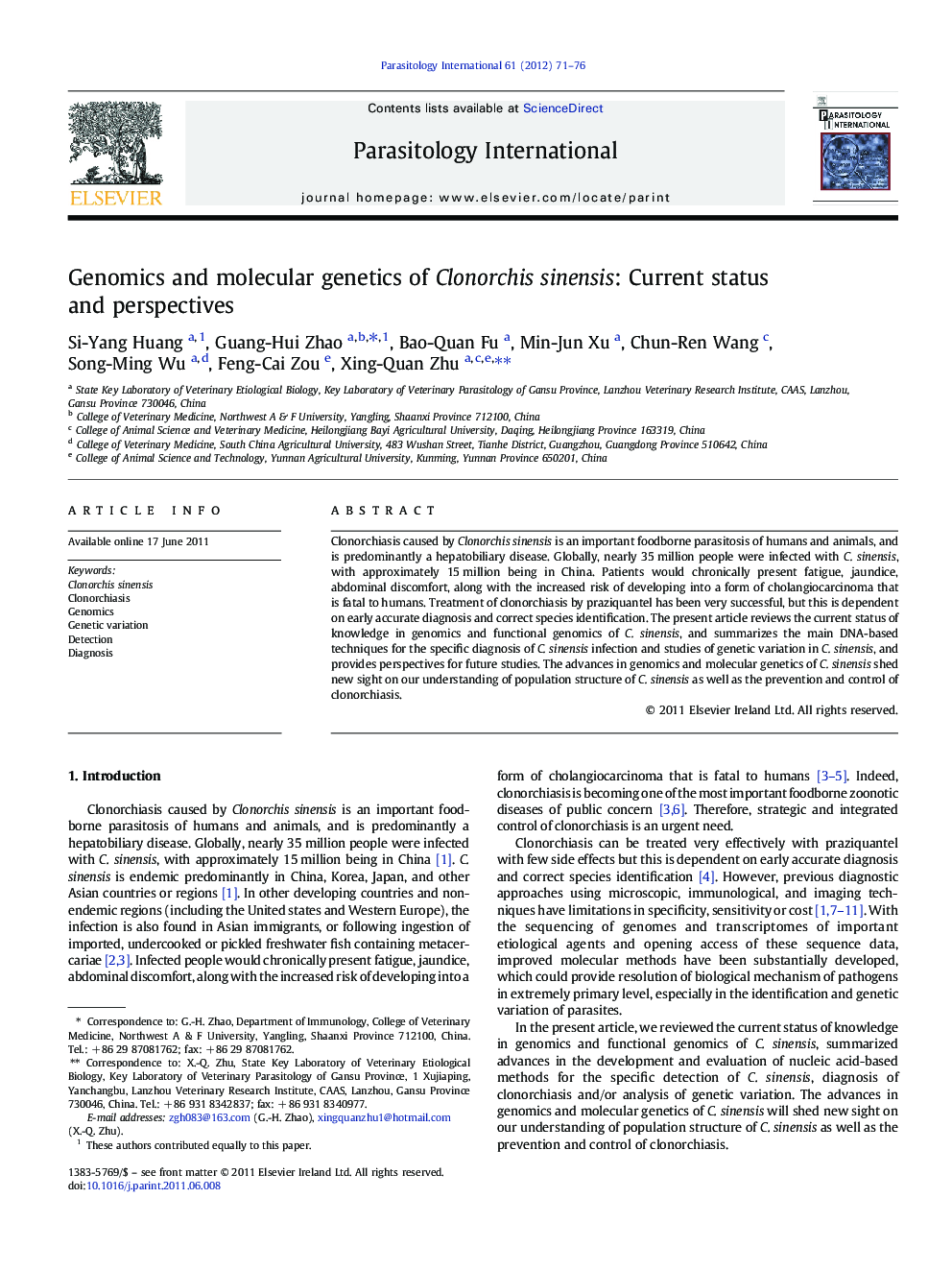| Article ID | Journal | Published Year | Pages | File Type |
|---|---|---|---|---|
| 3417917 | Parasitology International | 2012 | 6 Pages |
Clonorchiasis caused by Clonorchis sinensis is an important foodborne parasitosis of humans and animals, and is predominantly a hepatobiliary disease. Globally, nearly 35 million people were infected with C. sinensis, with approximately 15 million being in China. Patients would chronically present fatigue, jaundice, abdominal discomfort, along with the increased risk of developing into a form of cholangiocarcinoma that is fatal to humans. Treatment of clonorchiasis by praziquantel has been very successful, but this is dependent on early accurate diagnosis and correct species identification. The present article reviews the current status of knowledge in genomics and functional genomics of C. sinensis, and summarizes the main DNA-based techniques for the specific diagnosis of C. sinensis infection and studies of genetic variation in C. sinensis, and provides perspectives for future studies. The advances in genomics and molecular genetics of C. sinensis shed new sight on our understanding of population structure of C. sinensis as well as the prevention and control of clonorchiasis.
Research highlights► This article reviews advances in genomics and functional genomics of C. sinensis. ► Genetic variability among C. sinensis populations was summarized. ► Main DNA-based techniques for the diagnosis of C. sinensis infection were reviewed. ► Perspectives for future studies on genomics and molecular genetics were proposed.
